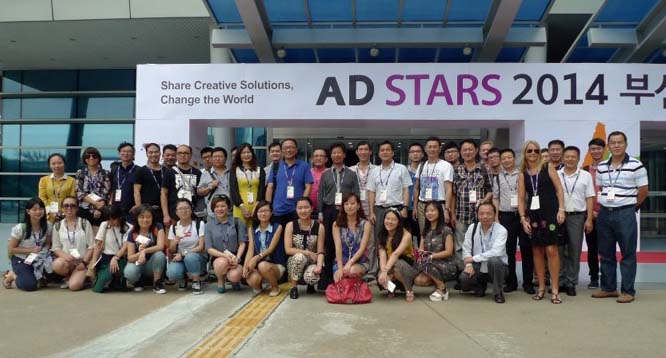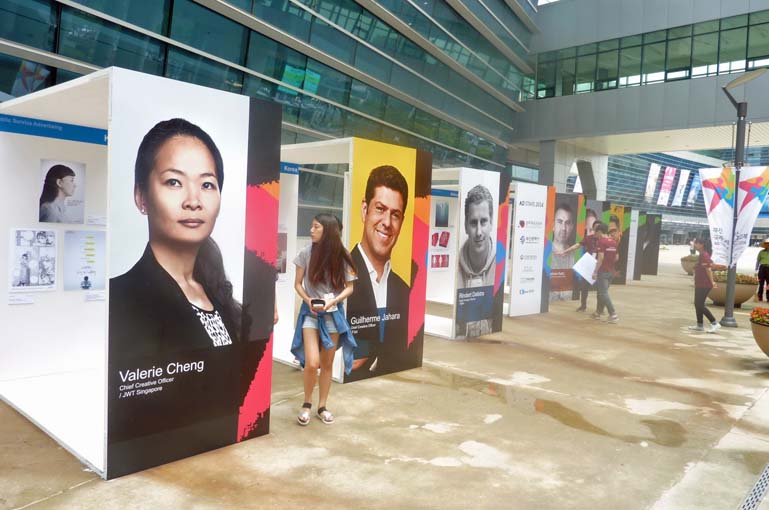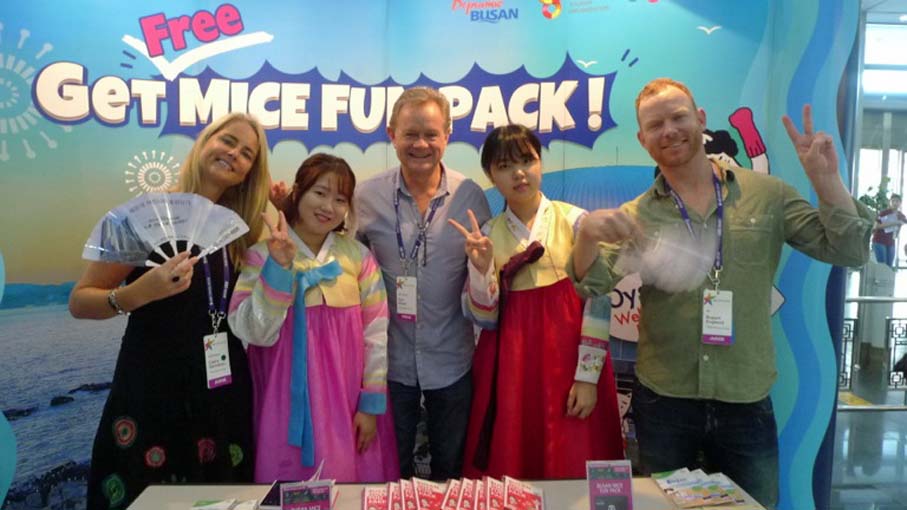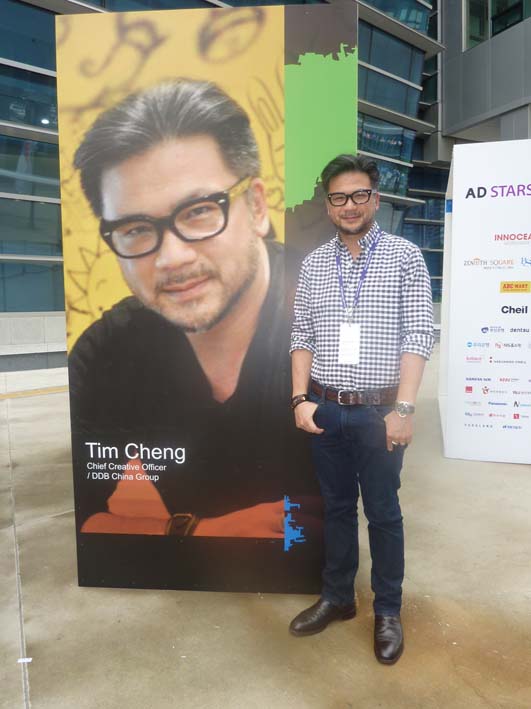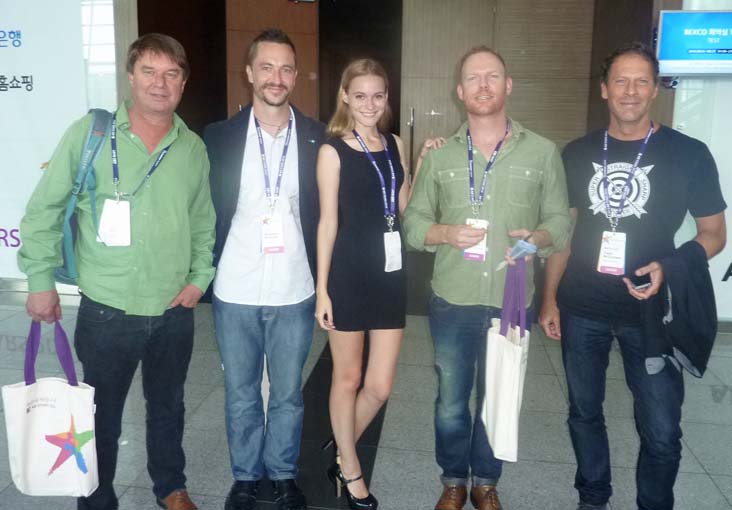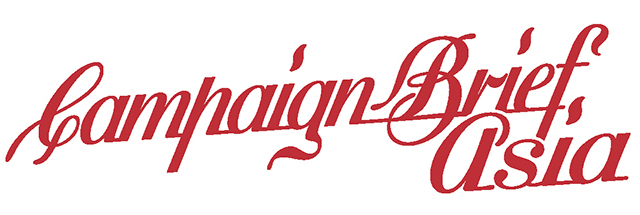Claire Davidson on the day one seminars at the 2014 AdStars Festival in Busan, South Korea
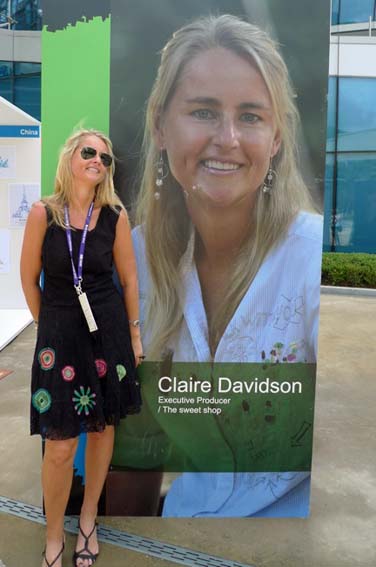 The AdStars festival officially commenced today with delegates from around the world rolling in to attend the three-day event. The next few days will see the global creative communications industries share their ideas and campaigns, with work entered and also discussed on the stages during the seminars and speaker sessions.
The AdStars festival officially commenced today with delegates from around the world rolling in to attend the three-day event. The next few days will see the global creative communications industries share their ideas and campaigns, with work entered and also discussed on the stages during the seminars and speaker sessions.
AdStars is hosted by Busan Metropolitan City; not only to support the domestic advertising industry, but also to garner a foothold internationally. This has well and truly proven to be the case with 12,591 entries from 62 countries coming in this year – now making AdStars the biggest advertising festival in Asia. This is a huge achievement for a festival that began only seven years ago, in 2008. This week we judged all 1,666 impressive finalists. I feel like we all need a cup of tea and a lie down.
The slogan for this year is “Share Creative Solutions, Change The World” with “convergence” being the central theme. AdStars focuses on sharing diverse creative solutions around the world, for the betterment of culture and humanity. We’re also being asked this week to think in detail about how we, in our professions in this industry, contribute to people through advertising.
The seminars kicked off today with “Open The Door To China”. Throughout the next three days here at AdStars the spotlight will be squarely on China, with discussions ranging from exploring new Chinese trends, to how we can make it in the Chinese market and even seeing the path to success for the South Korean cosmetics industry to enter the Chinese cosmetics market. We already know that South Korea is the number one holiday destination for Chinese women (with the USA the top pick for men).
Our first speakers were Ping Ling, Chief Editor of Advertising Pointer, Jin Xu, Vice President of Ifeng.com, Hui Zhao, Chairman on Guangzhou Himalayas Advertising Co Ltd, and Jie Fu, Founder and General Manager of Jiuyi Advertising. The talk was in Chinese, so apologies for any grammatical errors as Mandarin isn’t my strong point…
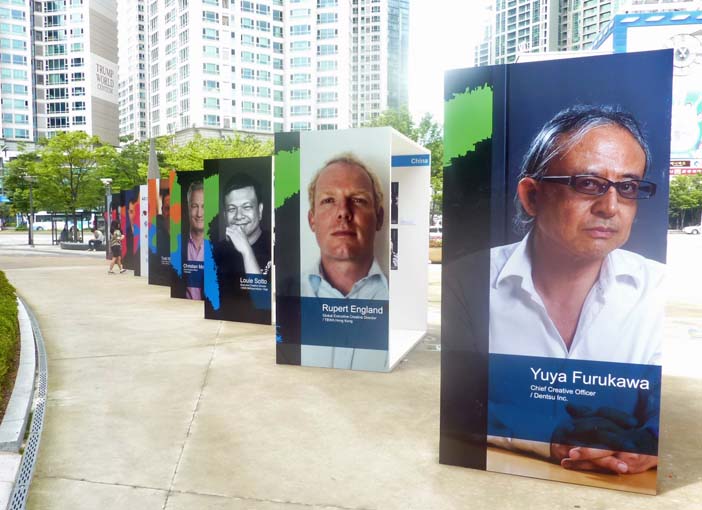 Changes are deeply penetrating into all levels of China, including the economy, consumption, audience and the media.
Changes are deeply penetrating into all levels of China, including the economy, consumption, audience and the media.
The economy is becoming China’s keynote – the process of urbanization, the rapid development of the internet and the consumption centres moving down to smaller cities. The leadership is striving for economic restructuring. Income is increasing in urban and rural areas, and consumption capacity is stronger. The development of small cities is promising. Online shopping is growing rapidly as marketing driving effects gradually step up.
Audience life and activities have changed. The audience attention has transferred. Internet users have increased dramatically. The mobility trend is obvious and the value of the mobile terminal is now highlighted. The mobile terminal is bringing up the quota of media contact. The number of people watching TV and using social software is increasing on a yearly basis.
This has brought about an increasing complexity in the media environment. Community media is taking up people’s lives. Media channels are no longer just broadcasting platforms of information. The growth of China’s traditional advertising mark will continue its overall trend to decline.
Change of business marketing strategy has had to occur. Business sentiment began picking up in 2014. Companies are showing higher expectations for the future. Digital marketing is a new trend. Precision marketing backed by technology and with emphasis on content is becoming a general trend. Precision of scale is especially needed by the advertising industry. New opportunities are brought by big data – the right time, the right content, and the right target audience.
Similar to the global market, China’s market is subject to substantial influence brought on by digitalization. This has resulted in huge changes in its consumption market, and marketing publicity environment. In addition, China’s large population and rapid urbanization will create a big consumption market. All these are important signals for investors throughout the world.
 Next up on the stage was Eric Schoeffler (right), Chief Creative Office of DDB Tribal, Germany who brought us “It’s Possible. But Don’t Think It’s Easy.” We looked at a feature film case study produced by the agency titled “Move On” – the road movie inspired by people.
Next up on the stage was Eric Schoeffler (right), Chief Creative Office of DDB Tribal, Germany who brought us “It’s Possible. But Don’t Think It’s Easy.” We looked at a feature film case study produced by the agency titled “Move On” – the road movie inspired by people.
Schoeffler started with a great quote for us by Howard Luck Gossage, “people read what interests them, and sometimes it’s an ad”. We want people to love our ads and engage with our ads and be excited by our ads. Today it’s just so much more than just awareness. There are now ways to create a deeper brand engagement. We are able to create a superior brand experience. We can use social creativity to build these influential brands. There’s never been a better time than today to get in touch with our consumers.
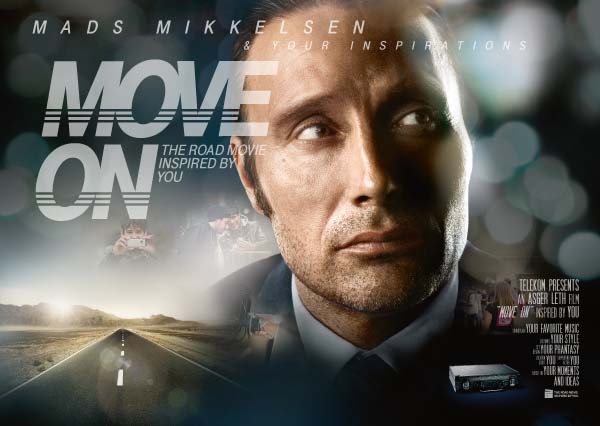
 Deutsche Telekom is the biggest German Telco. Their positioning is ‘life is for sharing’. They approached DDB Tribal to create a new campaign. The brief: create a pan European campaign to support mobile internet solutions and production from Deutsche Telekom.
Deutsche Telekom is the biggest German Telco. Their positioning is ‘life is for sharing’. They approached DDB Tribal to create a new campaign. The brief: create a pan European campaign to support mobile internet solutions and production from Deutsche Telekom.
The thought: to experience and share more ‘on the go’.
The idea: a Hollywood-like road movie experience for everyone and every level of engagement.
The user generated content film was created and shot for 12 territories in 6 weeks across 8 countries – The Netherlands, Austria, Slovakia, Hungary, Croatia, Montenegro, Macedonia and Germany. The approach was to connect and collaborate, in not just its message but also its logistical and production pathways. 10,000 people participated in this film. As a result, a lot of media attention was garnered. A large buzz was created and the telecom company became seen as the most innovative brand in Germany.
So looking at this feature film, is it advertising, product placement or branded entertainment? Is it a combination of all, in the quest for Deutsche Telekom to approach people using every touchpoint available to them today when speaking to their consumers and potential consumers? You can decide when you watch the film at www.move-on-film.com
 Aaron Lau (right), CEO of Cheil Greater China brought us “Beyond Convergence: The Business of Creativity”. As we progress in our evolutionary technological and digital world, advertising agencies need to take bigger steps to find ways to increase audience engagement in brand message, regardless of channels or venue. ‘Move On’ as discussed by Eric Schoeffler above is a brilliant example of this with a feature film made by Deutsche Telekom. It is very much a business.
Aaron Lau (right), CEO of Cheil Greater China brought us “Beyond Convergence: The Business of Creativity”. As we progress in our evolutionary technological and digital world, advertising agencies need to take bigger steps to find ways to increase audience engagement in brand message, regardless of channels or venue. ‘Move On’ as discussed by Eric Schoeffler above is a brilliant example of this with a feature film made by Deutsche Telekom. It is very much a business.
By also focusing on one of the themes of AdStars – how creativity can change the world – Lao asked us to first take a step back to change ourselves if we want to change the world. Or rather, to review how we have changed in recent times.
We took a look at the ten top publicly listed companies in the world -Apple, Google, Facebook, Amazon, Tencent, Ebay, Priceline, Baidu, Yahoo, and Salesforce.com (interestingly eight of these remain American and two are Chinese).
Technology is truly changing the world. For creativity to thrive we need to follow the money, and that’s what these tech companies are doing. They’ve stepped outside. We looked at this convergence of when creativity meets money, and how to take advantage of that. Cases included:
~ Apple has invested 3.5 billion in Beats, Broadmap and Topsy
~ Google has invested 9 billion in Deepmind, Nest, Wave and Uber
~ Facebook has invested 24 billion in Oculus, Whatsup and Instragram
~ Tencent has invested 7 billion in jd.com, CJ Games, Activision and Blizzard
~ Alibaba has invested 10 billion in Autonavi, Youku, Weib
o and Tango
We now learn very differently. We buy differently. We organise differently. Thus we now create differently. The future of advertising is creativity and the business side of our industry meeting somewhere in the middle. Advertisers need to create messages based on this new culture. We looked at the newish successful companies Uber, Tinder, Waze, and Airbnb.
The new communication paradigm for brand alignment should be:
~ led by the retail experience
~ supported by social digital marketing
~ made emotionally relevant by mass media
84% of people think advertising is a part of everyday life.
72% think advertising makes the world a better place. Wow!
40% of people love advertising. Double wow! (I think I’m glowing)
96% of consumers today are influenced by the internet when deciding on a purchase.
The convergence shift recognises the importance of providing ways for clients, agencies and the consumers themselves to create messages about a brand. Advertisers need to provide experience that is relevant to the consumer, and congruent to their worldview. It should reflect values – personal, social and environmental.
Follow the money… and seize the day! Thank you Aaron Lau.
On that note, that’s a wrap up from me today. We now have the AdStars 2014 Opening Ceremony, followed by the Opening Dinner. See you all tomorrow.
Claire Davidson, Executive Producer ASIA & MENA @ The SweetShop, reporting for Campaign Brief Asia at AdStars 2014.
